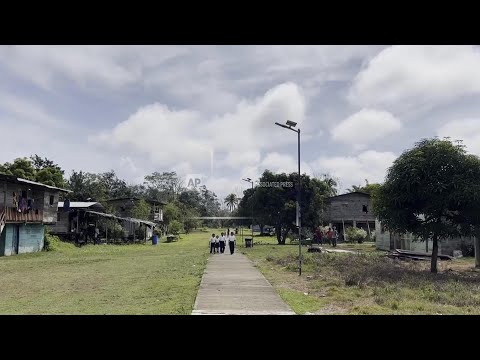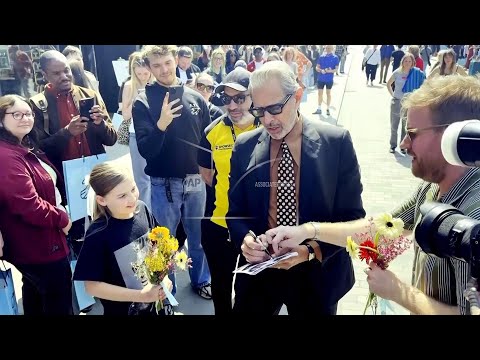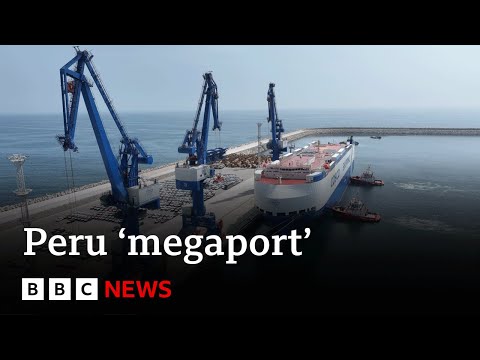(5 May 2025)
RESTRICTION SUMMARY:
ASSOCIATED PRESS
Villa Caleta, Panama – 7 April 2025
1. Aerial of Villa Caleta next to Tuquesa River
2. Children walking down road
3. Villa Caleta resident Militza Olea’s 3-year-old nephew in the arms of a relative
4. Various of rashes on child’s body
5. SOUNDBITE (Spanish) Militza Olea, Villa Caleta resident: ++STARTS ON SHOT 3++
"We don’t bathe there (in the Turquesa River) anymore. When you bathe there, you get itchy rashes. And for the children, it’s even more dangerous for them. Why? Because the water is polluted. There is a lot of garbage."
6. Wide of village
7. SOUNDBITE (Spanish) Cholino de Gracia, community leader:
"Culturally, fishing is our way of life. And now when we go fishing we are practically eating fish full of gasoline and that affects our health."
8. Aerial of village
ASSOCIATED PRESS
Darien National Park, Panama – 5 April 2025
9. Panama’s Environmental Minister Juan Carlos Navarro looking through binoculars during boat ride
10. Birds in tree
11. SOUNDBITE (Spanish) Juan Carlos Navarro, Panama’s Environmental Minister:
"Because when those migrants passed through the Darien Gap, they destroyed our forest and polluted our rivers, and polluted them with the corpses of people who died along the way."
12. Jungle by river
13. SOUNDBITE (Spanish) Juan Carlos Navarro, Minister of Environment of Panama:
"Well, the current U.S. administration could say, ‘It’s not our trash — it belongs to the illegals.’ But then, who pays Panama? Us alone struggling against illegal migration without money and with the few resources we have, with so much need in Panama. This is not fair and it’s not right. Those responsible should pay. If the United States is responsible because it opened its borders, then the United States should pay for it."
14. Aerial of river
STORYLINE:
For centuries, the Comarca Embera people have fished and bathed in the Turquesa River, a jungle waterway flowing out of the Darien Gap.
They’ve long been accustomed to changes in the water — rainy season brings mud and sediment in the faster-flowing river.
But now, they’re seeing unprecedented change in the wake of a migratory crisis: Trash, gasoline and fecal matter have been left behind from the 1.2 million vulnerable people who trekked through one of the Earth’s most biodiverse rainforests.
Migration through the Darien Gap — a remote area along the Colombia-Panama that sat largely untouched until it became the epicenter of 2021’s crush of migration — has virtually vanished, but families in the small community of Villa Caleta still fear bathing in the winding river.
Fish, their main food source, reek of fuel from boats that carried people down the Turquesa. And deeper in the jungle, criminal groups that pushed into the region to profit off the migratory route are part of illegal gold mining and deforestation operations.
Panamanian authorities and residents say that with the humanitarian crisis came an environmental crisis that will take years to reverse, while local communities suffer the consequences.
"The water is polluted. There is a lot of garbage," said Militza Olea, 43, eyeing the red sores still dotting the skin of her 3-year-old nephew days after he bathed in the Turquesa.
She said that now people break out in hives after being in the water.
It’s unclear what the specific cause of the skin irritation is, but the environmental impacts from the migration have been wide ranging.
They estimate that 2,500 tons of trash were left in the Darien Gap and that just cleaning it up along the migratory route will cost around $12 million.
Find out more about AP Archive: http://www.aparchive.com/HowWeWork
Twitter: https://twitter.com/AP_Archive
Facebook: https://www.facebook.com/APArchives
Instagram: https://www.instagram.com/APNews/
You can license this story through AP Archive: http://www.aparchive.com/metadata/youtube/480fc1336f1e4eec8de87799e12cfb50
Author: AP Archive
Go to Source
News post in May 10, 2025, 3:05 am.
Visit Our Sponsor’s:
News Post In – News





